Revolvers chambered for the 357 Magnum and 38 Special represent half of all current revolver production; 20% and 30% respectively. They exceed all other centerfire revolvers combined production and they outsell rimfire revolvers. Revolvers tend to be more accurate, more powerful, more reliable, faster to reload, and they can put more lead on target faster than an autoloader as demonstrated repeatedly by the disciples of Ed McGivern, like sixty one year old Jerry Miculek who can fire 6 shots with accuracy, reload and fire six more shots all within 2.99 seconds.
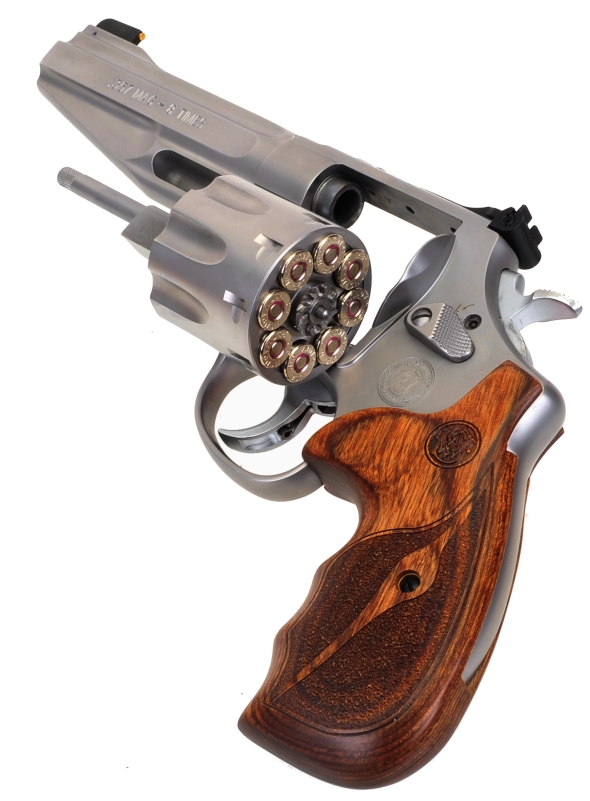
So why are autoloaders produced at a rate five times greater than revolvers? While a revolver has greater performance potential than an autoloader, autoloaders can be shot with competently with less training than required with a revolver and autoloaders are generally easier to conceal. Subsequently, while popular with retail consumers, autoloaders are also sold in very large numbers to our military and federal, state and local law enforcement and exported for the same applications. Production numbers do not necessarily reflect the demand based on personal preference. For me, the 357 Magnum revolver offers a degree of flexibility, a degree of utility, not found in an autoloader.
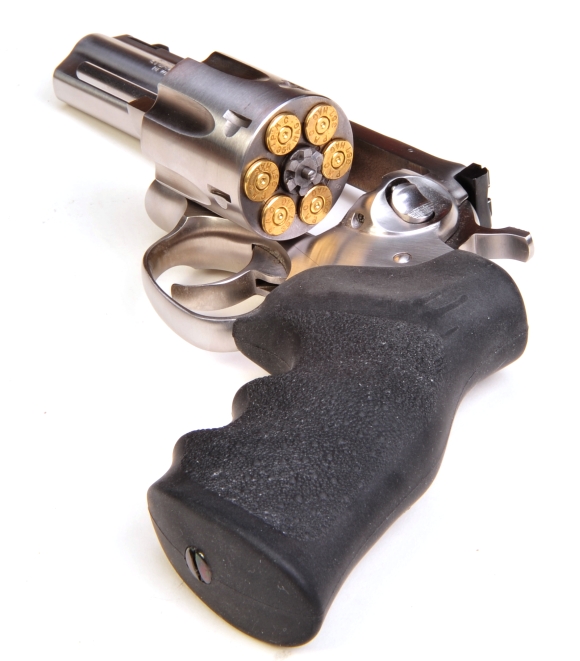
Pictured above, and what appears to be mocking the pose of the article’s lead image S&W Model 627, is my personal Ruger GP100, a well used and heavily flogged 357 Magnum. It is used for stress relieving recreational target practice, it is used for larger varmint and medium size game hunting and it is used as a defensive firearm around the house and shop. Its appearance is a little… seasoned, but its trigger is slick, its accurate and it always represents a handful of confidence is difficult situations.
Revolvers chambered for the 357 Magnum can also be loaded with 38 Special factory ammo designed for proficiency training or loaded up with ammo intended for self defense and hunting. The difference between the two type is major. Winchester USA 130 grain 38 Special ammo will generate 800 fps of muzzle velocity and 185 ft-lbs of muzzle energy. Buffalo Bore 180 grain 357 Magnum ammo will generate 1400 fps and 783 ft-lbs of energy in longer barrel revolvers. Within the noted performance range, there are currently 92 different factory loads for the 357 Magnum and 109 factory loads for the 38 Special. Not enough?…
Handloaders have a choice of 118 different bullet constructions and weights for the 38 Special/357 Magnum cartridges, from 110 to 200 grains and it is an inexpensive and easy round to handload. For folks who like to cast their own bullets, there is a wide selection of mold configurations. When it is time for a relaxation break, loading up a supply of 357 Mag ammo and spending some time punching holes in paper can seem like a short vacation. There must be reasons for the 38 Special being around since 1898, the 357 Magnum since 1935 and neither show signs of fading away.
Reasons to put down your phone and turn off your computer…
It seemed to me that there was less time in each day and I couldn’t figure out why, until I realized I was spending way too much time debating issue of little consequence with people I really didn’t know and who had little influence on my life. I realized that the dynamic was not to about finding knowledge and exploring issues, but rather to mostly advance a one sided agenda. Worse, most of the representations were negative, caustic and toxic and added nothing to my life. So I stopped. In doing so, life returned to being fun and dedicated to people of consequence and I actually had time for recreational handloading and experimenting. This was one of those moments.
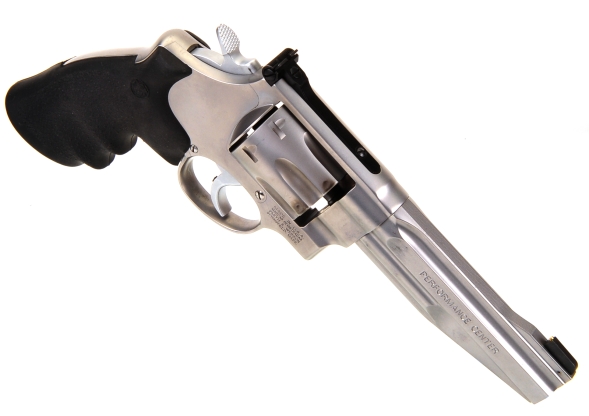
Below are three different types and weights of bullets, used for a variety of application; varmint, target practice and medium size game…. deer and hogs. These are not being touted as the best of anything, but rather handloads that have worked for me in terms of accuracy and reliability and those I chose to experiment with on this day.
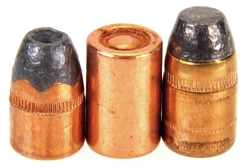
| Bullet | Type | Bullet Weight Grains |
Bullet Length Inches |
Seating Depth Inches |
COL Inches |
Net Case Capacity Grains |
| Remington | SJHP | 125 | 0.565 | 0.280 | 1.575 | 18.5 |
| Berry’s MFG | DEWC | 148 | 0.555 | 0.555 | 1.290 | 15.4 |
| Magtech | SJSP | 158 | 0.675 | 0.385 | 1.580 | 15.8 |
My preferences, when I can locate them are Remington’s Golden Saber 125 grain, the one made for the 357 Magnum Remington #: 23932, not the 38 Special version Remington #: 23940. Berry double end wad cutters were used for light target loads, however, there are numerous jacketed and lead cast wad cutters and semi wad cutters that will do as well. Rainer LeadSafe, Hunter’s Supply, Meister and even Remington make inexpensive cast or copper wad cutters. Both Hunters Supply and Oregon Trail also make hard cast 158 Grain Lead semi-wad cutters that is also very accurate.
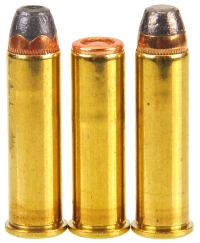 In heavier weights, there are many choices for self defense or hunting, rarely both the same. Winchester’s 145 grain Silver Tip is an excellent bullet for self defense. The Magtech bullet is also very good as are a multitude of other JHP lead core bullets. Tougher bullets for medium game hunting? Any of Sierra Sports Master jacketed soft point bullets 158 grain and above, Speer JSP in the same weight ranges, basically any hard cast products in the same weight range. For now…
In heavier weights, there are many choices for self defense or hunting, rarely both the same. Winchester’s 145 grain Silver Tip is an excellent bullet for self defense. The Magtech bullet is also very good as are a multitude of other JHP lead core bullets. Tougher bullets for medium game hunting? Any of Sierra Sports Master jacketed soft point bullets 158 grain and above, Speer JSP in the same weight ranges, basically any hard cast products in the same weight range. For now…
None of the loads presented are compressed, although some do fill cases just below bullet level. The wad cutter loads were original set at 1.290″, flush, however, the seated bullets contacted interior case taper and distorted the cases to an unacceptable degree. A firm roll crimp was used on all loads. Typically, H110 and W296 would get magnum primers, but not this time; all CCI 500.
 Warning: Bullet selections are specific, and loads are not valid with substitutions of different bullets of the same weight. Variations in bullet material and length will alter net case capacity, pressure and velocity results. Primer selection is specific and primer types are not inter changeable. These data represents maximum loads in our firearms and test equipment and may easily be excessive in other applications. All loads should be reduced by 5%, and developed following safe handloading practices as represented in established reloading manuals produced by component manufacturers. Presentation of these loads does not constitute a solicitation for their use, nor a recommendation. Warning: Bullet selections are specific, and loads are not valid with substitutions of different bullets of the same weight. Variations in bullet material and length will alter net case capacity, pressure and velocity results. Primer selection is specific and primer types are not inter changeable. These data represents maximum loads in our firearms and test equipment and may easily be excessive in other applications. All loads should be reduced by 5%, and developed following safe handloading practices as represented in established reloading manuals produced by component manufacturers. Presentation of these loads does not constitute a solicitation for their use, nor a recommendation.
|
||||||||||||||||||||||||||||||||||||||||||||||||||||||||||||||||||||||||||||||||||||||||||||||||||||
|
|
||||||||||||||||||||||||||||||||||||||||||||||||||||||||||||||||||||||||||||||||||||||||||||||||||||
Below, one of the reasons wad cutter target loads are so much fun to shoot. Very little recoil and report and accuracy can be high if enough time is devoted to experimenting and practice as can be seen in these worst, best, three shot groups.
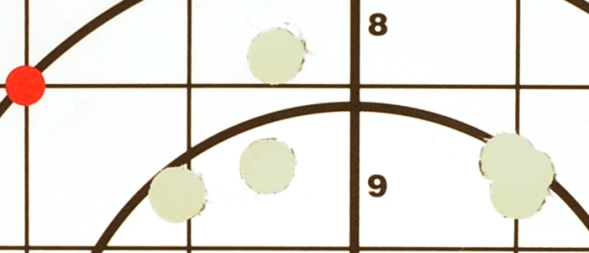
Conclusion…
None, as there was no objective other than to document some handloading activity. Wish more people would give handloading a try, it ads so much to firearm enjoyment.

Email Notification